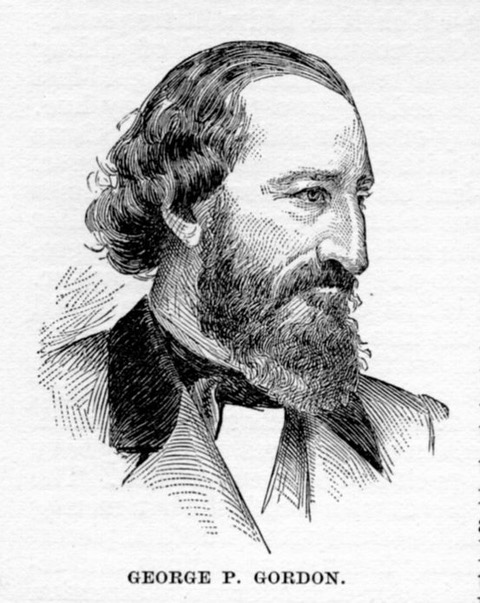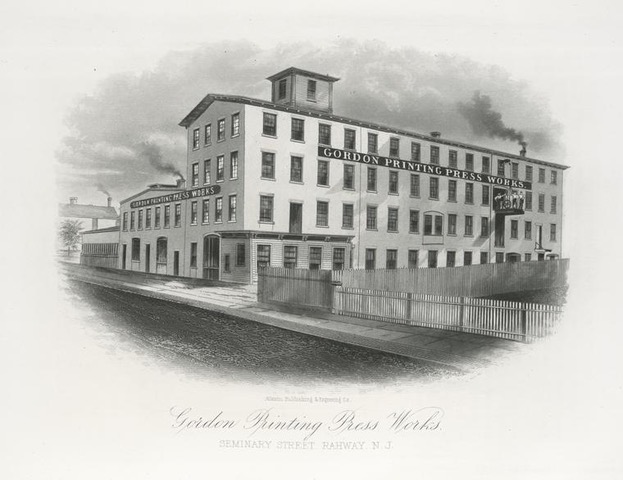
Rahway Entrepreneur, George P. Gordon
Submitted by Al Shipley, City Historian and Rahway Library Research Consultant
George Phineas Gordon, a popular figure in the community in the decade of the 1870s, was a businessman, inventor, and printer who developed the basic design of the most common printing press made to date, the Gordon Jobber Press.
Born in 1821 in Salem, New Hampshire, Gordon was a lad with an aptitude for machinery who began sketching designs for anything mechanical including printing presses while still in his teens. By 1851, at age 30, he received his first patent for a job press which could produce up to 2,000 impressions per hour. Prior to his invention, the average hand press could only produce 300 copies per hour and required the labor of two men.
Gordon’s biggest breakthrough, however, came in 1858 when he produced the Gordon Jobber, a machine which was strong, well-built, and easy to operate. Known by printers as the “upside-down press,” the bed containing the form was placed above a platen which moved upward to make the impression. The design was unique and would remain virtually unchanged over the next 120 years.

Legend has it that the idea for the design came to Gordon in a dream where he was visited by the famous statesman/inventor Benjamin Franklin. A Spiritualist for much of his life, Gordon maintained that old Ben had appeared to him while he was asleep and shared the basic design for his innovative invention. In gratitude, he called his invention the “Franklin” but most in the business referred to it as the Gordon Jobber and the name stuck.
With his reputation in place, Gordon established a factory in Rahway in 1872 where he would secure over 50 patents while accumulating a large fortune. The factory would reach a capacity to build over 600 presses per year.
The Gordon Printing Press Works was a large four-story brick building located on the north side of Seminary Avenue a short distance from Irving Street. Adjoining the main building was a foundry where the castings used in the manufacturing of the presses were made. Several small outbuildings for storage of lumber, sand, iron, and coal dotted the property. Smith Street, the short, one-way street connecting Hamilton Street with Seminary Avenue and fronting the factory was renamed Gordon Place in honor of the inventor who had become an active participant in many public enterprises. It was said that Gordon had done more for the city in various ways than by any one before.
An enthusiastic devotee of theatricals and a great admirer of the Shakespearean Theater, Gordon built the Gordon Opera House as a “compliment” to the city where he had made his fortune. Located on the east side of Irving Street between Elm Avenue and Elizabeth Avenue, it was one of the largest opera houses in the country. Built at a cost of $100,000.00, it was his way of bringing culture to Rahway. (Go on line at Renna Media, “Our Town” to find the article on Gordon’s Opera House in the June 2014 issue).
In ill health the last few years of his life, Gordon died in 1878 at the age of 67. By the end of the 1800s, more than a dozen companies were building presses based on the Gordon Jobber design. The company left Rahway in 1907 and relocated in Chicago. The factory was razed sometime between 1911 and 1915. Today, it is estimated that over 10,000 of his presses are still in operation in the United States and around the world.
